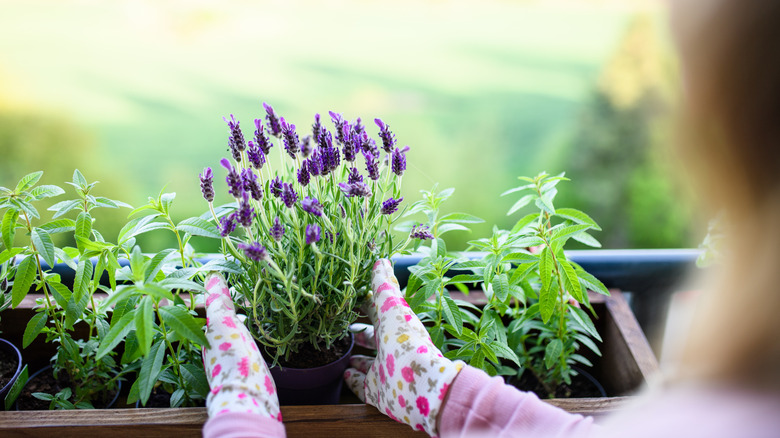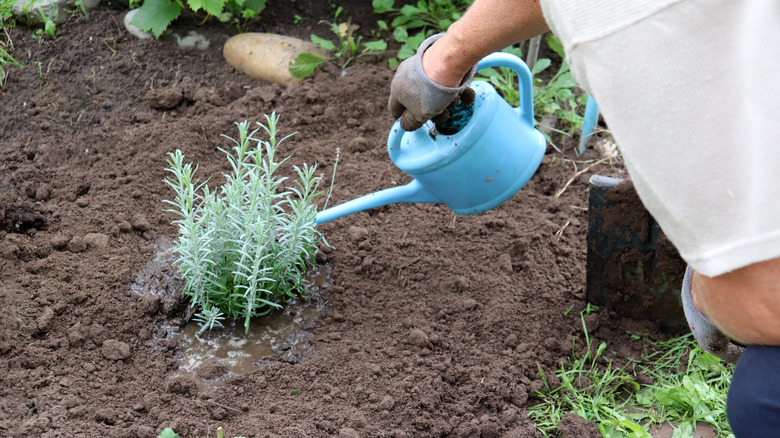The Important Step To Ensure Your Lavender Doesn't Die After Planting
Lavender (Lavandula augustifolia) is native to the Mediterranean region, but it's popular with many American gardeners. The gorgeous purple flowers and enticing fragrance of lavender make it a classic choice in cottage gardens and herb gardens. There are some cold-hardy varieties that do well in United States growing zones, even in the Northeast, but lavender has other growing needs to keep in mind. It's crucial to give a new lavender plant a good start by watering the roots well before transplanting. You might assume you already know everything you need to know about lavender before planting, but skipping this step could affect the plant's ability to recover from transplant shock.
Transplant shock refers to the potential weakening of plants as their roots and soil are disturbed when being moved from one environment to another. Nursery plants can sometimes become root-bound in their containers, making them more vulnerable to transplant shock. The extensive roots of lavender plants have a tendency to become root-bound in containers if left unplanted for too long. Watering before and after planting helps alleviate this impact by keeping the roots hydrated.
When selecting your lavender plants, try to choose some that have a soft, loose soil texture, which helps to indicate that they aren't root-bound. However, if the only plants available seem dense and difficult to remove from the pot, you can still plant them successfully. Water them deeply as soon as you get home, and if you're not planting right away, place the containers in a spot where the water can drain out easily. After planting, maintain a good watering routine as the plant settles.
Care after planting
Being a Mediterranean herb, lavender needs full sun and a sandy, well-draining, slightly alkaline soil. However, it is not particularly drought-tolerant until it is well-established, so watering to soothe transplant shock is very important. Avoid overwatering, and keep in mind that humidity can be a silent killer of lavender in hot climates. In addition to water, putting down a very light layer of mulch can help the roots retain moisture and alleviate transplant shock.
Location is important for success when planting lavender. Another tip to lessen transplant shock is to prepare the new planting location before bringing the plants home. This way the lavender roots spend minimal time without soil around them. Choose a spot with at least six hours of sun, and add some compost to improve soil drainage if needed, and a bit of sand to help mimic a Mediterranean garden setting.
Lavender can also grow well in containers as long as they have excellent drainage. If you grow it in containers, keep an eye on the plants as they get bigger, as they can still become root-bound even in a large pot. If you repot or move your plants, remember to follow the rule of watering well to minimize transplant shock. Once established, this herb's fragrant flowers will repel mosquitoes and perfume your garden, as well as attract beneficial pollinators like honey bees and butterflies. For these reasons and for ease of care, planting your lavender in the front of the flower bed is often a good strategy.

